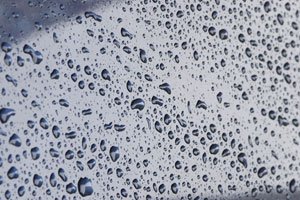Warm temperatures and mostly clear skies are predicted
throughout the week, leaving the water district hoping for more
rain to replenish nearby reservoirs.
Gilroy
Warm temperatures and mostly clear skies are predicted throughout the week, leaving the water district hoping for more rain to replenish nearby reservoirs.
So far this season, 3.58 inches of rain have hit Gilroy, according to Dispatch records. The season runs from July 1 to June 30, and Gilroy averages about 20 inches annually. Rain is expected Friday, but mostly sunny skies and highs hovering about 60 degrees are expected into the weekend, according to The Weather Channel. Lows will vary from the low 30s to the low 40s.
About four miles northeast of the city sits the Coyote Reservoir, one of 10 belonging to the Santa Clara Valley Water District. The water district’s Web site reports that 2.72 inches of rain have fallen into the artificial lake as of Dec. 15, the latest date for which figures were available. That is about 46 percent below average. The reservoir holds 23,244 acre-feet of water, with one acre-feet enough to last a family of five for one year. As of Dec. 15, nearly 10,000 acre-feet filled the reservoir. While that represents about 43 percent of its capacity, the reservoir still has about twice as much water as it has had historically this time of year. Another critical source of water for Gilroy is the Uvas Reservoir, which is 89 percent below capacity with less than 1,000 acre-feet.
District Spokesperson Susan Siravo said that is why the water authority has been hoping for substantial rainfall this month.
“We have had some rain storms over past week or so, but they really haven’t helped us that much in terms of water supply. We’re seeing an inch to 2 inches, and the next one to come will be about an inch or so, but we really need some powerful storms.”
The half-inch of rain that fell earlier this week has not been enough to saturate the ground and produce run-off, which follows the earth’s natural and artificial contours to reach nearby reservoirs as well as the aqueduct beneath South County. A recent court decision also reduced the amount of water the district receives from the Sacramento-San Joaquin River Delta by 30 percent, according to Siravo. Imported water accounts for about 50 percent of the district’s water supply.
“We still need people to conserve,” Siravo said. “We’re getting less imported water after two dry years.” The water district last imposed rationing in 1991.
Meanwhile, a winter storm brought snow to the Lake Tahoe region last week – an early Christmas present for ski resorts. Yet, icy roads across northern Nevada were blamed for scores of spinouts and at least one traffic death, authorities said.
“Making fresh tracks was the mantra this morning” Andy Chapman, tourism director of the North Lake Tahoe Resort Association, said last week. “Almost every car headed through our towns and resorts was loaded with skis and boards and snow enthusiasts eager to take advantage of the great conditions.”
Just two weeks ago, temperatures were relatively balmy and snow was scarce. But in the past two weeks, some areas received up to 7 feet of snow.













